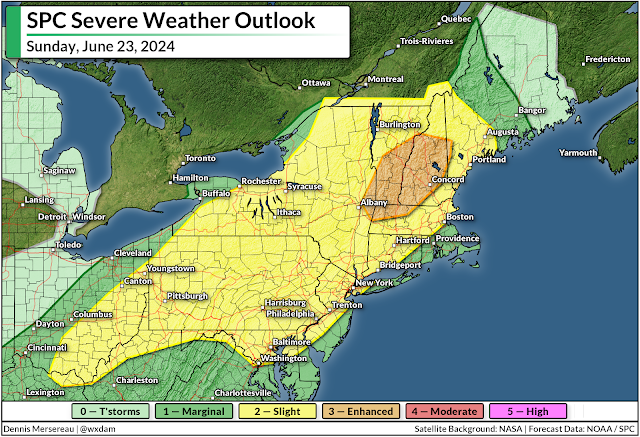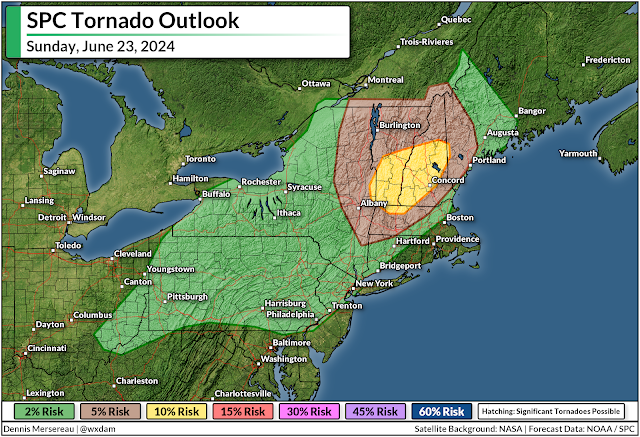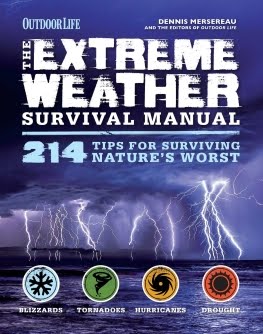A risk for tornadoes will build over parts of New England on Sunday as a strong low-pressure system moves just north of the region. Keep a close eye on the radar through the day and make sure you have a way to get warnings the moment they're issued.
Forecasters are watching a low-pressure system moving through Ontario and Quebec this weekend. This system will spark thunderstorms throughout the northeastern U.S. on Sunday, bringing a risk for all modes of severe weather as they feed on ample warmth, humidity, and wind shear across the region.
 |
| A forecast surface analysis for 2:00 p.m. EDT on Sunday. (WPC) |
The Storm Prediction Center has issued a slight risk for severe weather covering most of New England, New York, and Pennsylvania through the day Sunday. Damaging winds and large hail will be the primary threats in the strongest storms that develop.
Dynamics are favorable for an increased risk for tornadoes in storms that form closer to the center of low pressure, along and just behind the warm front as it scooches near the international border. The Storm Prediction Center outlined Vermont, New Hampshire, western Massachusetts, and eastern New York as the most favorable area for tornadoes through Sunday afternoon.
An enhanced risk for severe weather covers southern sections of Vermont and New Hampshire where a higher risk for tornadoes will exist on Sunday.
Tornadoes aren't uncommon in New England, but a threat like this only comes around every couple of years.
Folks here always aren't dialed into the threat for severe weather—especially if they're outdoors enjoying the steamy summer weather.
If you live in the region, or know anyone who's in the region this weekend, get the word out that severe thunderstorms are possible on Sunday. Make sure you have a way to get severe weather warnings the moment they're issued.
Look at your smartphone and ensure that emergency alerts are turned on for tornado warnings. These push alerts are geotargeted to your location—if you get one, you are in danger, and you need to take shelter immediately. Wireless emergency alerts are credited for saving countless lives since they were implemented last decade.
NOTE: I updated the article a few minutes after publication as the Storm Prediction Center released a new outlook upgrading some areas to an enhanced risk for severe weather.









0 comments: